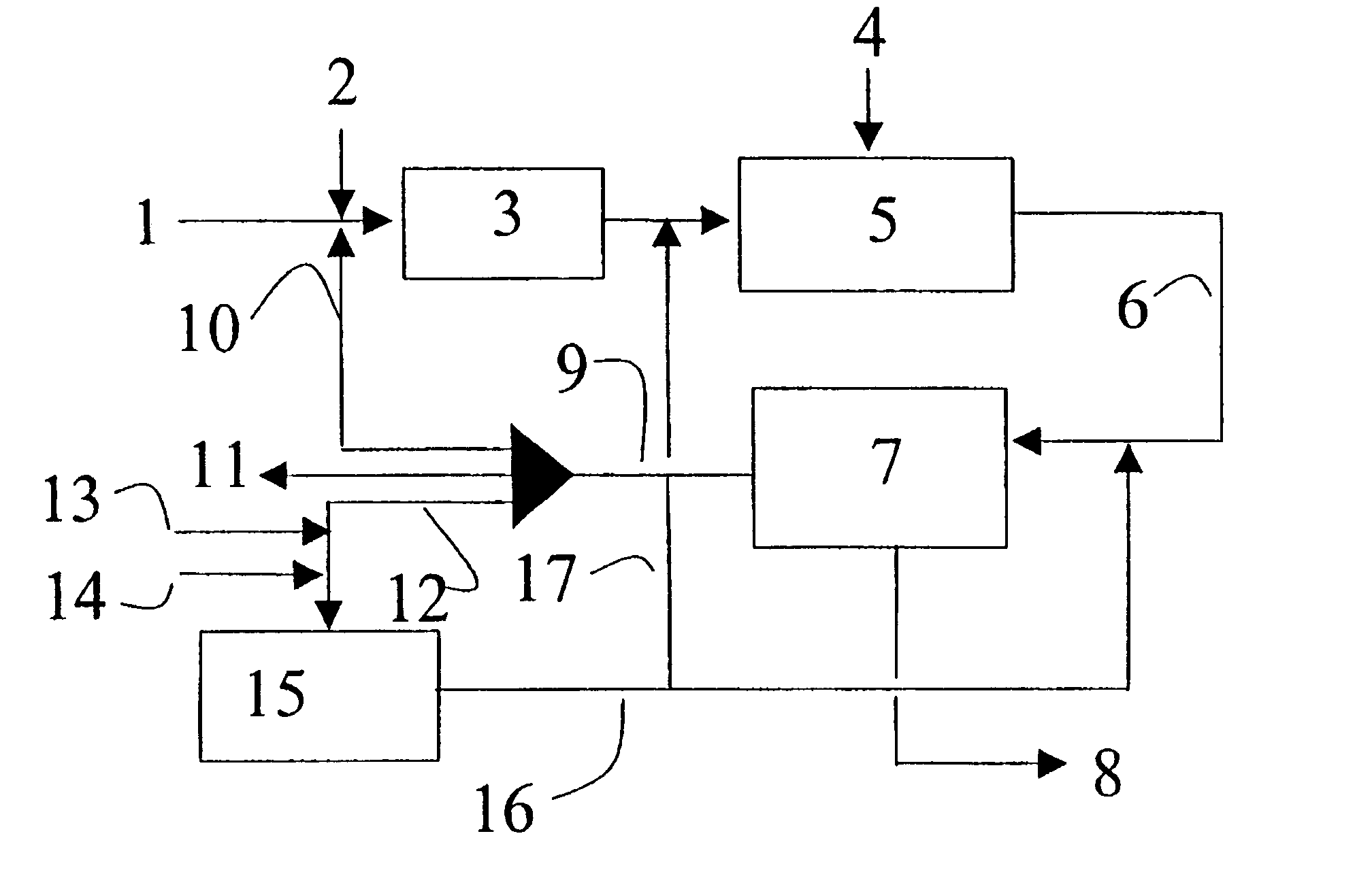Optimum integration of Fischer-Tropsch synthesis and syngas production
a technology of fischer-tropsch synthesis and syngas, applied in the direction of organic chemistry, chemistry apparatus and processes, chemical compounds, etc., can solve the problems of low carbon efficiency in comparison with theoretical achievement, low product yield, low carbon efficiency, etc., and achieve high efficiency for process plants, limited increase in efficiency, and high carbon efficiency.
- Summary
- Abstract
- Description
- Claims
- Application Information
AI Technical Summary
Benefits of technology
Problems solved by technology
Method used
Image
Examples
Embodiment Construction
Five different plants / modes of operation of the plant were simulated in order to show the advantages of the present invention compared with previously known technology traditionally used in plants for synthesis of synthetic hydrocarbons. In all the examples, the production was set at 20 000 BPD or 101 tons / hour. The examples were as follows:
Ex. A Production of synthetic hydrocarbons by conventional autothermal reforming (ATR).
Ex. B Production of synthetic hydrocarbons by conventional combined reforming.
Ex. C Production of synthetic hydrocarbons by ATR and F-T tail gas reformer. No addition of natural gas to the tail gas reformer. The product from the tail gas reformer was fed to the F-T reactor.
Ex. D Production of synthetic hydrocarbons by ATR and F-T tail gas reformer. 10% of the natural gas feed to the process is added directly to the tail gas reformer. The product from the tail gas reformer was fed to the F-T reactor. The portion of the tail gas that is drawn off from the plant i...
PUM
| Property | Measurement | Unit |
|---|---|---|
| temperature | aaaaa | aaaaa |
| temperature | aaaaa | aaaaa |
| operating temperature | aaaaa | aaaaa |
Abstract
Description
Claims
Application Information
 Login to View More
Login to View More - R&D
- Intellectual Property
- Life Sciences
- Materials
- Tech Scout
- Unparalleled Data Quality
- Higher Quality Content
- 60% Fewer Hallucinations
Browse by: Latest US Patents, China's latest patents, Technical Efficacy Thesaurus, Application Domain, Technology Topic, Popular Technical Reports.
© 2025 PatSnap. All rights reserved.Legal|Privacy policy|Modern Slavery Act Transparency Statement|Sitemap|About US| Contact US: help@patsnap.com



